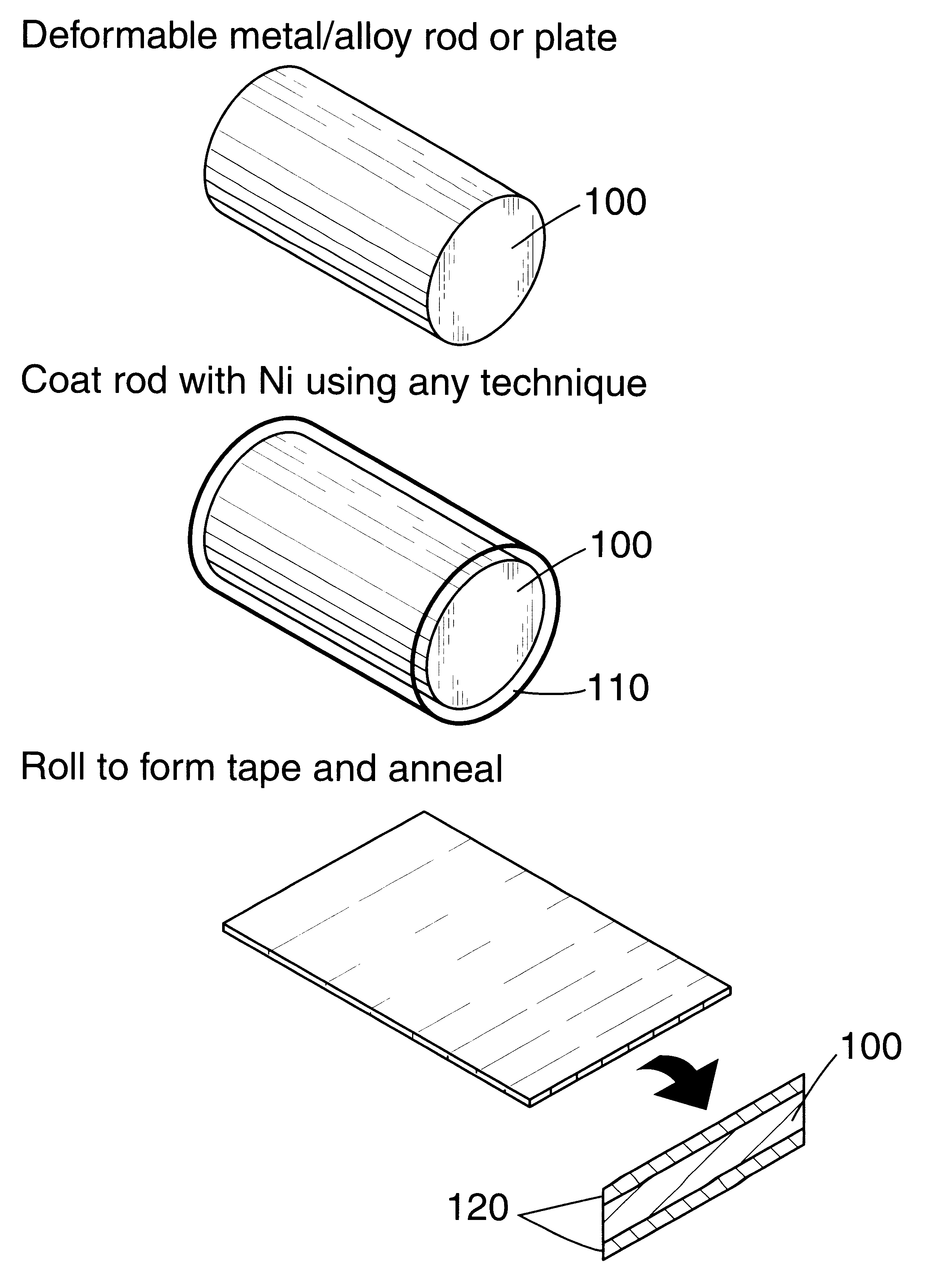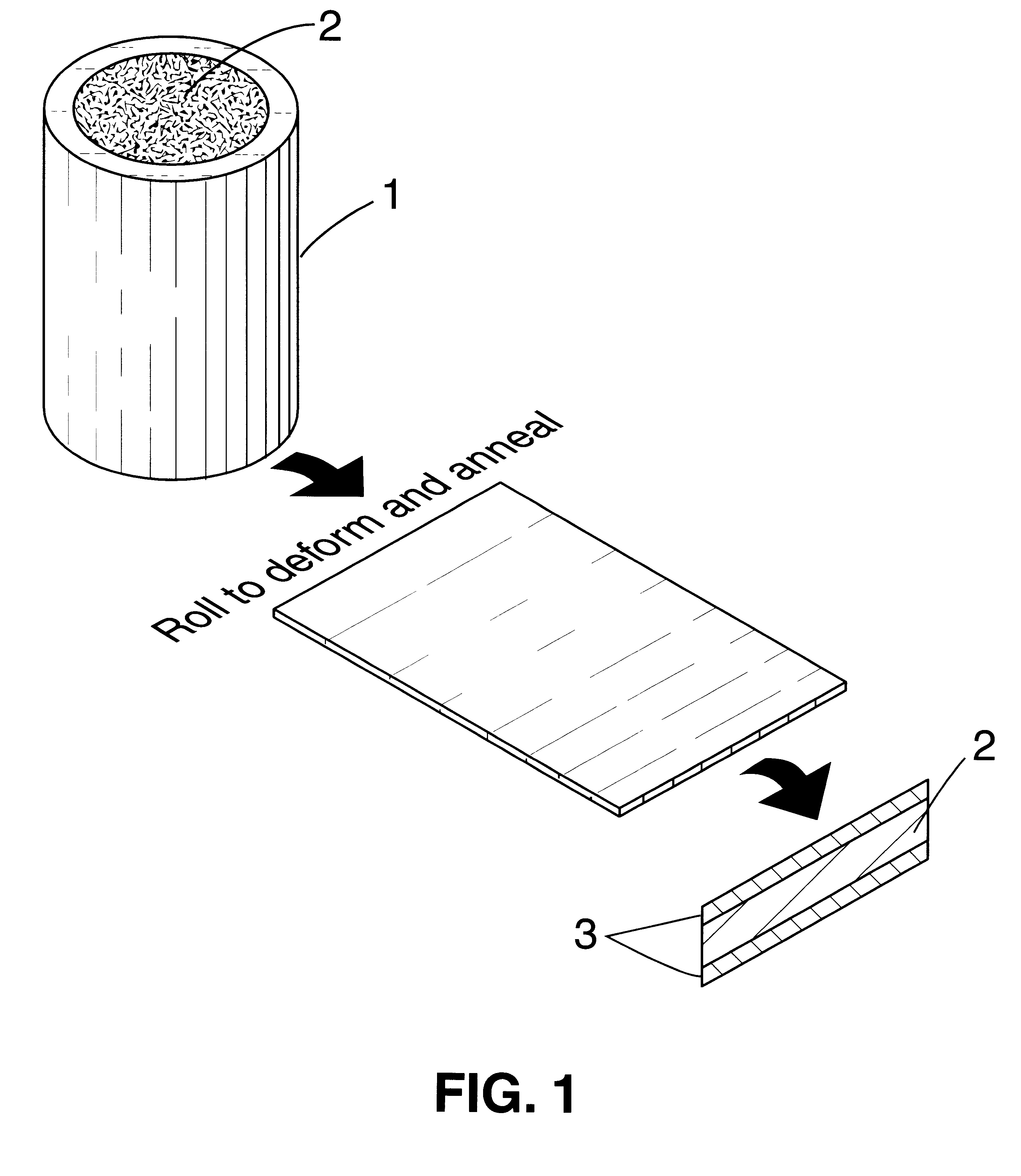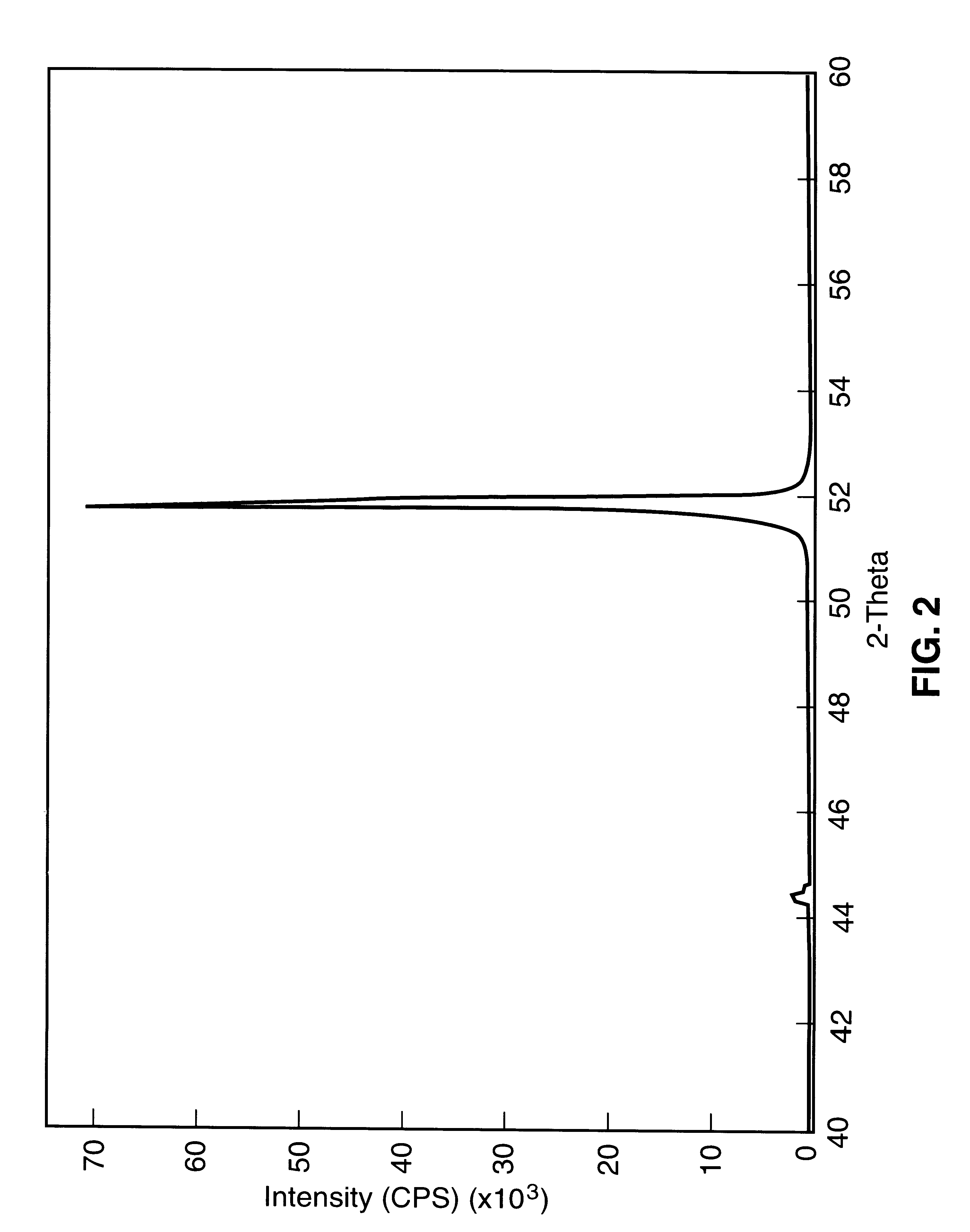Biaxially textured articles formed by plastic deformation
a technology of plastic deformation and textured articles, which is applied in the field of ybco films, can solve the problems of difficult scaling up for lengths adequate for many applications, slow ibad, and high cost, and achieve the effect of improving the superconducting properties of ybco films
- Summary
- Abstract
- Description
- Claims
- Application Information
AI Technical Summary
Benefits of technology
Problems solved by technology
Method used
Image
Examples
example ii
Begin with a preform such as a rod or billet 100 of an alloy which does not texture, but has the ideal physical properties desired, as shown in FIG. 9. Physical properties could be particular values of mechanical strength, yield strength, fracture strength, thermal expansion, magnetism, and the like, for example, as a function of temperature. Laminate or coat the rod or billet 100 with a metal or alloy 110 which is known to produce a biaxial texture 120 upon plastic deformation and recrystallization, such as Ni. Plastically deform, for example by rolling, the composite structure such that the coating is deformed for example greater than 90% for Ni. This is followed by rapid recrystallization of the laminate or coating to produce a biaxial texture 120. Since the texture is already produced in the laminate or coating prior to any interdiffusion of elements from the inside, texture of the laminate or coating is not significantly affected. Epitaxial multilayers (metal / oxide) may now be ...
example iii
If the deformation behavior of the preform and the laminate or coating are very different, as shown in FIG. 11a, the two may be plastically deformed under different conditions, followed by final steps where further bonding methods such as co-rolling are employed to bond the biaxially textured laminate or coating 310 with the preform 300. Of course, in the laminate, the plastic deformation is performed to obtain a well developed copper-type texture prior to bonding. Bonding to produce a bonded structure 320 is affected usually by a combination of mechanical pressure and temperature. This is followed by annealing to produce the biaxial texture in the laminate or coating. This method and structure is illustrated in FIGS. 11a.
Similarly, FIG. 11b shows a substrate 400 having an annealed Ni tape 410 bonded thereupon by rolling, and a cube texture 420 produced on the Ni tape.
PUM
| Property | Measurement | Unit |
|---|---|---|
| thickness | aaaaa | aaaaa |
| diameter | aaaaa | aaaaa |
| superconductivity | aaaaa | aaaaa |
Abstract
Description
Claims
Application Information
 Login to View More
Login to View More - R&D
- Intellectual Property
- Life Sciences
- Materials
- Tech Scout
- Unparalleled Data Quality
- Higher Quality Content
- 60% Fewer Hallucinations
Browse by: Latest US Patents, China's latest patents, Technical Efficacy Thesaurus, Application Domain, Technology Topic, Popular Technical Reports.
© 2025 PatSnap. All rights reserved.Legal|Privacy policy|Modern Slavery Act Transparency Statement|Sitemap|About US| Contact US: help@patsnap.com



